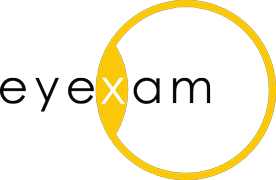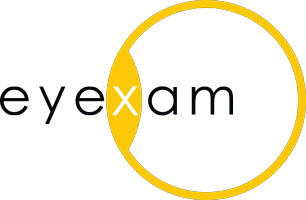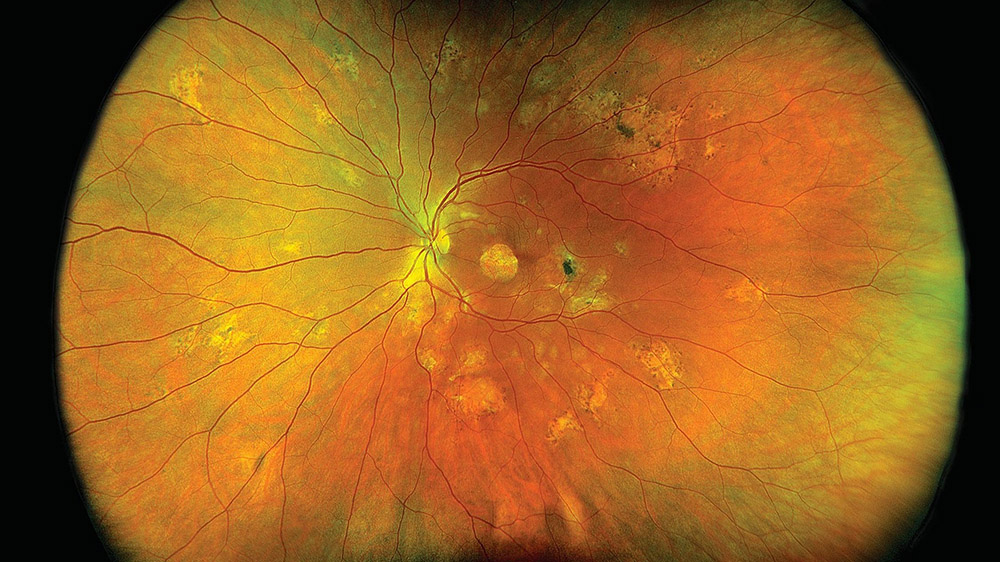
Advanced Retinal Imaging: The Key to Early Detection of Eye Diseases
When it comes to maintaining healthy vision, early detection of eye diseases is crucial. Many eye conditions develop slowly, often without noticeable symptoms in the early stages, making regular eye exams with advanced diagnostic tools essential. One of the most powerful tools in modern optometry is advanced retinal imaging, which allows for a detailed look at the back of the eye (the retina) to detect potential issues before they become serious problems.
At eyeXam in Newport Beach, we utilize cutting-edge retinal imaging technology to provide our patients with the highest level of eye care. In this blog post, we’ll explore the importance of advanced retinal imaging, the conditions it helps detect, and how it plays a critical role in preserving your vision for years to come.
What Is Advanced Retinal Imaging?
Advanced retinal imaging is a non-invasive diagnostic procedure that allows optometrists to capture detailed images of the retina, optic nerve, and surrounding blood vessels. Unlike traditional eye exams, which rely on manual observation through an ophthalmoscope, advanced imaging technology provides high-resolution, 3D images of the retina, enabling early detection of diseases that can affect vision.
This technology has revolutionized eye care, making it easier to spot the signs of eye diseases before patients experience symptoms. At eyeXam, we use the latest in retinal imaging technology to ensure our patients receive comprehensive, accurate diagnoses.
Conditions Detected by Advanced Retinal Imaging
Retinal imaging is a vital tool in diagnosing a wide range of eye diseases, many of which can lead to permanent vision loss if left untreated. Below are some of the key conditions that can be detected and monitored through advanced retinal imaging.
1. Age-Related Macular Degeneration (AMD)
What it is:
AMD is a leading cause of vision loss in people over the age of 50. It affects the macula, the part of the retina responsible for central vision, making it difficult to read, recognize faces, or drive. There are two types of AMD: dry and wet.
- Dry AMD: The most common form, where the macula gradually deteriorates.
- Wet AMD: A less common but more severe form, where abnormal blood vessels grow under the retina and leak fluid or blood.
How retinal imaging helps:
Advanced retinal imaging allows for the early detection of changes in the macula, even before noticeable vision loss occurs. This early diagnosis is crucial for managing the progression of AMD and preventing further damage.
2. Diabetic Retinopathy
What it is:
Diabetic retinopathy is a complication of diabetes that occurs when high blood sugar levels damage the blood vessels in the retina. Over time, these damaged vessels can leak fluid or blood, leading to vision problems and, in severe cases, blindness.
How retinal imaging helps:
Retinal imaging can detect the earliest signs of diabetic retinopathy, such as microaneurysms (small bulges in blood vessels), retinal swelling, and abnormal blood vessel growth. Early detection allows for timely intervention, including laser treatment or injections to prevent vision loss.
3. Glaucoma
What it is:
Glaucoma is a group of eye conditions that damage the optic nerve, often due to increased pressure inside the eye. It can lead to gradual vision loss, starting with peripheral vision. If left untreated, glaucoma can cause irreversible blindness.
How retinal imaging helps:
By providing a detailed view of the optic nerve, advanced retinal imaging can detect early signs of glaucoma, such as thinning of the optic nerve fibers. Detecting glaucoma early is essential for preserving vision, as treatment can slow the progression of the disease.
4. Retinal Detachment
What it is:
Retinal detachment occurs when the retina pulls away from its underlying tissue, leading to vision loss if not treated promptly. It is often caused by tears or holes in the retina that allow fluid to accumulate underneath.
How retinal imaging helps:
Advanced retinal imaging can detect retinal tears, holes, or areas of thinning that could lead to detachment. Early detection is key to preventing full detachment and permanent vision loss.
5. Optic Nerve Diseases
What they are:
The optic nerve is responsible for transmitting visual information from the retina to the brain. Conditions that affect the optic nerve, such as optic neuritis (inflammation of the optic nerve) or optic neuropathy, can result in vision loss.
How retinal imaging helps:
Imaging provides a detailed view of the optic nerve head, allowing for the detection of swelling, damage, or other abnormalities. Early detection can help in the management of optic nerve conditions, potentially preventing permanent damage.
6. Hypertensive Retinopathy
What it is:
Hypertensive retinopathy occurs when high blood pressure causes damage to the blood vessels in the retina. Over time, this can lead to vision problems and an increased risk of more serious eye conditions.
How retinal imaging helps:
Retinal imaging can detect changes in the retinal blood vessels, such as narrowing or leakage, that indicate hypertensive retinopathy. By identifying these signs early, patients can be advised to manage their blood pressure more effectively to prevent further damage.
The Benefits of Advanced Retinal Imaging
Advanced retinal imaging offers numerous benefits over traditional eye exams, making it a vital part of modern optometry. Here are some of the key advantages:
1. Early Detection
Many eye diseases, including glaucoma and macular degeneration, develop slowly and without symptoms in the early stages. Advanced retinal imaging can detect subtle changes in the retina and optic nerve long before they cause noticeable vision problems. Early detection allows for earlier intervention, which is often key to preventing permanent vision loss.
2. Non-Invasive and Painless
Retinal imaging is a quick, painless, and non-invasive procedure. It doesn’t require any contact with the eye, making it a comfortable option for patients. Unlike traditional dilated eye exams, which can cause temporary blurred vision and sensitivity to light, retinal imaging typically doesn’t require dilation, allowing patients to resume normal activities immediately after the exam.
3. Comprehensive View of the Retina
Advanced retinal imaging provides high-resolution, wide-field images of the entire retina, allowing optometrists to see areas that may be missed during a traditional eye exam. This comprehensive view is particularly important for detecting conditions like diabetic retinopathy, which often affects the peripheral retina first.
4. Tracking Disease Progression
For patients with existing eye conditions, advanced retinal imaging is an essential tool for monitoring disease progression. By comparing images from previous exams, optometrists can track changes over time and adjust treatment plans as necessary. This helps ensure that any worsening of the condition is addressed promptly.
Why Choose eyeXam for Advanced Retinal Imaging?
At eyeXam in Newport Beach, we are committed to providing our patients with the highest level of eye care. Our use of advanced retinal imaging technology allows us to detect and monitor eye diseases with unparalleled precision. Whether you are at risk for a specific condition or simply want to ensure your eyes are healthy, our experienced team is here to provide comprehensive care tailored to your needs.
We understand that early detection is critical to preserving vision, and we are dedicated to using the latest technology to help our patients maintain healthy eyes for life. Our advanced imaging tools, combined with personalized care, make us a trusted choice for eye health in Newport Beach and beyond.
How to Prepare for Your Retinal Imaging Appointment
Preparing for your retinal imaging appointment is simple. In most cases, the procedure doesn’t require dilation, so you can plan to return to your normal routine immediately afterward. However, if dilation is necessary, we will let you know ahead of time, and you may want to arrange for someone to drive you home after the exam.
During the procedure, you will sit comfortably while the imaging device captures detailed pictures of your retina. The process is quick and painless, typically taking only a few minutes.
Advanced Retinal Imaging in Newport Beach, CA
Advanced retinal imaging is an invaluable tool for detecting and monitoring a wide range of eye conditions. By providing detailed, high-resolution images of the retina and optic nerve, this technology allows for early diagnosis and timely treatment, helping to preserve vision and prevent serious complications.
At eyeXam in Newport Beach, we are proud to offer advanced retinal imaging as part of our comprehensive eye care services. Whether you are due for a routine eye exam or have a specific concern about your eye health, our team is here to provide the care you need. Contact us today to schedule your retinal imaging appointment and take the first step toward protecting your vision for the future.
Read More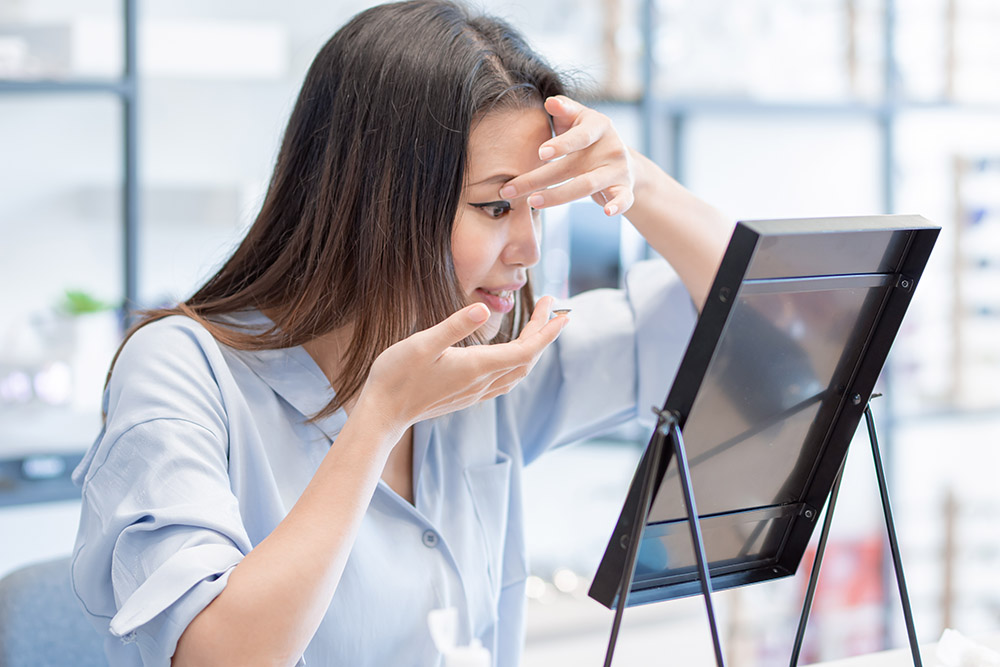
Specialized Contact Lens Fittings: Finding the Perfect Fit for Your Eyes
For many people, contact lenses are a convenient and effective alternative to glasses. However, not all eyes are the same, and finding the perfect pair of contact lenses often requires more than a standard fitting. That’s where specialized contact lens fittings come in. These fittings are designed for patients with unique vision needs, irregular eye shapes, or conditions that require custom lenses for optimal comfort and performance.
At eyeXam in Newport Beach, we offer specialized contact lens fittings to ensure that every patient enjoys clear, comfortable vision. In this blog post, we will explore the importance of these fittings, the types of lenses available, and how the process can help you find the best lenses for your eyes.
Why Specialized Contact Lens Fittings Matter
Many patients can wear standard soft contact lenses without any issues. However, if you have specific eye conditions, irregularities in your corneas, or unique visual requirements, traditional lenses may not provide the clarity or comfort you need. In these cases, specialized contact lens fittings are essential to customize the lenses to your specific eye shape and condition.
Here are some reasons why you might need a specialized fitting:
1. Irregular Corneas
Conditions such as keratoconus, where the cornea becomes thin and cone-shaped, or corneal scarring from injury or surgery, can make it difficult to wear standard lenses. Specialized lenses like scleral lenses or hybrid lenses are often the best solution for providing clear, stable vision.
2. Astigmatism
Astigmatism is a common condition where the eye’s cornea is unevenly curved, causing blurry or distorted vision. For patients with significant astigmatism, traditional soft lenses may not correct vision adequately. Toric contact lenses are designed specifically for astigmatism, providing clearer, sharper vision.
3. Presbyopia
As we age, presbyopia—a condition that affects the ability to focus on close objects—becomes more common. Multifocal or bifocal contact lenses are available to help patients with presbyopia see both near and far clearly without the need for reading glasses.
4. Dry Eyes
For patients with chronic dry eyes, wearing contact lenses can sometimes cause discomfort or irritation. Specialized lenses, such as scleral lenses, can provide moisture to the eye’s surface and relieve the symptoms of dry eyes while offering clear vision.
Types of Specialized Contact Lenses
At eyeXam, we offer a range of specialized contact lenses designed to address various eye conditions and provide the best fit and comfort for our patients. Below are some of the most common types of specialized lenses we use:
1. Toric Contact Lenses for Astigmatism
Toric lenses are designed to correct astigmatism by compensating for the irregular curvature of the cornea. Unlike standard spherical lenses, which are the same power in all directions, toric lenses have different powers in different parts of the lens to correct both nearsightedness or farsightedness and astigmatism.
Benefits of Toric Lenses:
- Correct astigmatism along with other vision issues
- Stabilize on the eye to maintain consistent vision
- Available in both soft and rigid gas-permeable (RGP) materials
2. Multifocal and Bifocal Lenses for Presbyopia
For patients who need help seeing both near and far objects, multifocal and bifocal contact lenses offer a great alternative to reading glasses. These lenses contain multiple prescriptions in one lens, allowing for clear vision at different distances.
Benefits of Multifocal/Bifocal Lenses:
- Eliminate the need for reading glasses
- Provide clear vision at all distances
- Available in soft, RGP, and hybrid options
3. Scleral Lenses for Irregular Corneas and Dry Eyes
Scleral lenses are larger than traditional contact lenses and rest on the sclera (the white part of the eye) instead of directly on the cornea. This design makes them ideal for patients with irregular corneas, such as those with keratoconus, or patients who experience severe dry eyes.
Benefits of Scleral Lenses:
- Vault over the cornea to provide stable, sharp vision
- Create a fluid reservoir to keep the eyes hydrated
- Ideal for patients with corneal irregularities or severe dry eye
4. Rigid Gas-Permeable (RGP) Lenses
RGP lenses are made of durable plastic that transmits oxygen to the eyes, making them a healthy and long-lasting option. While they may take longer to get used to compared to soft lenses, RGP lenses often provide sharper vision, especially for patients with astigmatism or irregular corneas.
Benefits of RGP Lenses:
- Provide crisp, clear vision
- Durable and long-lasting
- Less prone to drying out compared to soft lenses
5. Hybrid Contact Lenses
Hybrid contact lenses combine the comfort of soft lenses with the clarity of rigid lenses. They feature a rigid center for clear vision and a soft outer ring for comfort. These lenses are often recommended for patients with keratoconus or those who need the stability of RGP lenses but want more comfort.
Benefits of Hybrid Lenses:
- Offer the best of both worlds: comfort and clarity
- Provide excellent vision for patients with irregular corneas
- Suitable for patients who find RGP lenses uncomfortable
The Specialized Contact Lens Fitting Process
At eyeXam, the specialized contact lens fitting process is designed to ensure that every patient finds the perfect lenses for their needs. Here’s what you can expect during your fitting:
1. Comprehensive Eye Exam
The first step in the fitting process is a thorough eye exam. This exam will assess your overall eye health, check your vision prescription, and identify any underlying conditions that may affect your ability to wear certain types of contact lenses.
2. Corneal Measurements
Precise measurements of your cornea are essential to finding the right lenses. Using advanced imaging technology, we will measure the shape and curvature of your cornea to determine which type of lens will provide the best fit and vision correction.
3. Lens Selection
Based on your eye exam and corneal measurements, your optometrist will recommend the best type of contact lenses for your specific needs. Whether you need toric lenses for astigmatism, scleral lenses for dry eyes, or multifocal lenses for presbyopia, we will guide you through the options and help you make the best choice.
4. Trial and Follow-Up
Once your lenses are selected, we will provide trial lenses for you to wear. During this trial period, we will assess the fit and comfort of the lenses and make any necessary adjustments. Follow-up appointments ensure that your lenses are providing the best possible vision and comfort.
Why Choose eyeXam for Specialized Contact Lens Fittings?
At eyeXam in Newport Beach, we pride ourselves on providing personalized care to each of our patients. Our specialized contact lens fittings go beyond the standard approach, ensuring that every patient receives the perfect lenses for their unique needs. With advanced diagnostic tools, a wide range of lens options, and a commitment to excellence, we help our patients achieve clear, comfortable vision every day.
Specialized Contact Lens Fitting in Newport Beach, CA
Finding the right contact lenses is about more than just vision correction—it’s about achieving the perfect balance of clarity, comfort, and eye health. Whether you have astigmatism, presbyopia, dry eyes, or irregular corneas, specialized contact lens fittings at eyeXam can provide the customized solution you need.
If you’re ready to explore your options for contact lenses, contact us today to schedule your personalized fitting and take the first step toward better vision.
Read More
Age-Related Eye Conditions: What to Look Out For and How to Prevent Them
As we age, maintaining healthy vision becomes increasingly important. Many age-related eye conditions can develop gradually, often without noticeable symptoms in the early stages. This makes it crucial to stay proactive in monitoring eye health. In this blog post, we will explore the most common age-related eye conditions, what signs to watch for, and how you can prevent these issues to ensure long-term visual health.
At eyeXam in Newport Beach, we specialize in comprehensive eye care for patients of all ages, and our team is dedicated to helping you preserve your vision as you age.
Common Age-Related Eye Conditions
Aging naturally affects our eyes, just like any other part of our body. Below are some of the most common age-related eye conditions:
1. Presbyopia
What it is:
Presbyopia is the gradual loss of your eyes’ ability to focus on nearby objects. It usually becomes noticeable in your 40s and progresses with age.
Symptoms:
- Difficulty reading small print
- Holding reading materials farther away
- Eye strain or headaches when doing close-up work
Prevention & Management:
While presbyopia cannot be prevented, it is easily managed with corrective lenses such as reading glasses, bifocals, or progressive lenses. Regular eye exams can help detect presbyopia early, and your optometrist can recommend the right lenses for your needs.
2. Cataracts
What it is:
Cataracts occur when the eye’s lens becomes cloudy, leading to blurred vision. It is one of the most common causes of vision loss in older adults. Cataracts can develop slowly over time and can affect one or both eyes.
Symptoms:
- Blurry, cloudy, or dim vision
- Difficulty seeing at night
- Sensitivity to light and glare
- Seeing halos around lights
- Colors appearing faded or yellowed
Prevention & Management:
Cataracts are primarily age-related, but you can slow their progression by protecting your eyes from UV light, not smoking, and maintaining a healthy diet. When cataracts begin to interfere with daily activities, cataract surgery is a highly effective treatment option.
3. Age-Related Macular Degeneration (AMD)
What it is:
AMD affects the macula, the central part of the retina responsible for sharp, detailed vision. It can lead to central vision loss, making it difficult to perform tasks like reading or recognizing faces.
There are two types of AMD:
- Dry AMD: The more common type, where the macula gradually thins with age.
- Wet AMD: A less common but more severe form, involving abnormal blood vessel growth under the retina.
Symptoms:
- Blurred or reduced central vision
- Difficulty seeing fine details
- Straight lines appearing wavy or distorted
- Dark or empty areas in the center of vision
Prevention & Management:
To lower the risk of AMD, it is essential to eat a diet rich in leafy greens, fish, and antioxidant-rich foods. Regular eye exams can help detect early signs of AMD, especially if it runs in your family. Early intervention with supplements, laser therapy, or injections can slow the progression of wet AMD.
4. Glaucoma
What it is:
Glaucoma is a group of eye diseases that damage the optic nerve, often due to high eye pressure (intraocular pressure). If left untreated, glaucoma can lead to irreversible vision loss, starting with peripheral vision.
Symptoms:
- In its early stages, glaucoma often has no symptoms.
- Gradual loss of peripheral vision
- Tunnel vision in advanced stages
- Severe eye pain, nausea, or blurred vision in cases of acute angle-closure glaucoma (a medical emergency)
Prevention & Management:
Regular eye exams are the best way to detect glaucoma early, especially if you have risk factors like a family history, high eye pressure, or diabetes. Eye drops, medications, laser treatments, or surgery can be used to control glaucoma and prevent vision loss.
5. Diabetic Retinopathy
What it is:
Diabetic retinopathy occurs when high blood sugar levels damage the blood vessels in the retina, leading to vision problems. It is a common complication of diabetes and can lead to blindness if not managed.
Symptoms:
- Floaters or spots in vision
- Blurred or fluctuating vision
- Dark or empty areas in vision
- Vision loss in advanced stages
Prevention & Management:
If you have diabetes, maintaining good blood sugar control is crucial to preventing or slowing the progression of diabetic retinopathy. Regular eye exams are essential for early detection, and treatments such as laser therapy or injections can help manage the condition.
Tips for Preventing Age-Related Eye Conditions
While some age-related eye conditions are inevitable, there are steps you can take to protect your vision and slow the progression of certain issues.
1. Schedule Regular Eye Exams
The best way to prevent serious eye conditions is through regular, comprehensive eye exams. These exams can catch early signs of eye disease before symptoms appear. At eyeXam in Newport Beach, we recommend annual eye exams for older adults to monitor changes in vision and eye health.
2. Protect Your Eyes from UV Rays
Prolonged exposure to ultraviolet (UV) rays can accelerate the development of cataracts and increase the risk of other eye problems. Wearing sunglasses with 100% UV protection when outdoors is a simple yet effective way to shield your eyes from harmful rays.
3. Maintain a Healthy Diet
A diet rich in vitamins and nutrients is essential for eye health. Foods high in omega-3 fatty acids, zinc, vitamin C, and vitamin E can reduce the risk of eye diseases like AMD and cataracts. Incorporate leafy greens, fish, nuts, and citrus fruits into your meals for optimal eye nutrition.
4. Quit Smoking
Smoking increases the risk of cataracts, AMD, and other eye conditions. Quitting smoking can significantly reduce the risk of developing these conditions and improve your overall health.
5. Manage Chronic Health Conditions
Conditions like diabetes, high blood pressure, and high cholesterol can have a negative impact on your eyes. Managing these conditions through medication, a healthy lifestyle, and regular medical check-ups is essential for protecting your vision.
6. Stay Active
Regular physical activity improves circulation, which can help lower intraocular pressure and reduce the risk of glaucoma. Exercise also helps manage weight, blood pressure, and cholesterol levels, all of which contribute to overall eye health.
7. Use Proper Lighting and Take Breaks
Straining your eyes in dim lighting or staring at digital screens for prolonged periods can lead to eye fatigue and discomfort. Make sure your reading and work areas are well-lit, and follow the 20-20-20 rule: every 20 minutes, look at something 20 feet away for at least 20 seconds to give your eyes a break.
Age-related Eye Condition Treatment in Newport Beach, CA
As we age, our eyes require extra care and attention to prevent and manage age-related eye conditions. By staying proactive with regular eye exams, maintaining a healthy lifestyle, and protecting your eyes from environmental factors, you can preserve your vision and enjoy a better quality of life.
At eyeXam in Newport Beach, we offer comprehensive eye care services tailored to your unique needs. Contact us today to schedule your next eye exam and take the first step in safeguarding your vision for the future.
Read More
The Role of Nutrition in Eye Health: Foods and Supplements for Better Vision
When it comes to maintaining good vision and overall eye health, what you eat plays a crucial role. The eyes, like every other part of your body, require specific nutrients to function optimally. At eyeXam we believe in a holistic approach to eye care, which includes proper nutrition. In this article, we’ll explore the key nutrients that support eye health, the foods rich in these nutrients, and the role of supplements in maintaining clear and healthy vision.
Understanding the Connection Between Diet and Eye Health
The eyes are highly metabolically active organs, constantly exposed to light and environmental stressors. This makes them particularly vulnerable to oxidative stress, which can lead to damage over time. However, certain nutrients have been shown to protect the eyes from oxidative damage, reduce the risk of age-related eye diseases, and support overall eye function.
A balanced diet rich in vitamins, minerals, and antioxidants can help prevent or delay the onset of various eye conditions, including cataracts, macular degeneration, and dry eyes. Let’s dive into the key nutrients that play a vital role in maintaining eye health.
Essential Nutrients for Eye Health
- Vitamin A
- Vitamin A is perhaps the most well-known nutrient for eye health. It is essential for maintaining the health of the cornea (the clear front surface of the eye) and plays a crucial role in vision by allowing the eyes to adapt to low-light conditions. A deficiency in vitamin A can lead to night blindness and increase the risk of more severe eye conditions.
Best Sources:
- Carrots, sweet potatoes, spinach, kale, and other leafy green vegetables are rich in beta-carotene, which the body converts into vitamin A. Animal sources like liver, eggs, and dairy products also provide direct vitamin A.
- Lutein and Zeaxanthin
- Lutein and zeaxanthin are powerful antioxidants found in high concentrations in the macula, the part of the retina responsible for central vision. These nutrients help filter harmful blue light and protect the eyes from oxidative stress. Studies suggest that a diet rich in lutein and zeaxanthin can reduce the risk of age-related macular degeneration (AMD) and cataracts.
Best Sources:
- Leafy greens such as kale, spinach, and collard greens are excellent sources of lutein and zeaxanthin. Other good sources include broccoli, peas, corn, and eggs.
- Vitamin C
- Vitamin C is a potent antioxidant that supports the health of blood vessels in the eyes. It helps protect against cataracts and, when combined with other essential nutrients, can slow the progression of age-related macular degeneration.
Best Sources:
- Citrus fruits like oranges, grapefruits, and lemons are well-known sources of vitamin C. Other fruits and vegetables rich in vitamin C include strawberries, bell peppers, broccoli, and kiwi.
- Vitamin E
- Vitamin E is another antioxidant that plays a significant role in protecting the eyes from oxidative damage. It works by neutralizing free radicals that can damage cells in the eyes, potentially reducing the risk of cataracts and macular degeneration.
Best Sources:
- Nuts and seeds, such as almonds, sunflower seeds, and hazelnuts, are rich sources of vitamin E. Green leafy vegetables, avocados, and fortified cereals also provide this essential nutrient.
- Omega-3 Fatty Acids
- Omega-3 fatty acids, particularly DHA (docosahexaenoic acid), are essential for maintaining the structure and function of the retinal cells. They also play a crucial role in reducing inflammation and supporting tear production, which can help prevent dry eyes. Omega-3s have been linked to a lower risk of AMD and may also benefit those with dry eye syndrome.
Best Sources:
- Fatty fish such as salmon, mackerel, sardines, and trout are excellent sources of omega-3 fatty acids. For those who prefer plant-based options, flaxseeds, chia seeds, walnuts, and algal oil are good alternatives.
- Zinc
- Zinc is a mineral that plays a vital role in transporting vitamin A from the liver to the retina, where it is converted into melanin, a protective pigment. Zinc is essential for maintaining the health of the retina and may help slow the progression of AMD.
Best Sources:
- Oysters are one of the best sources of zinc. Other good sources include beef, poultry, beans, nuts, and dairy products.
- B Vitamins
- B vitamins, particularly B6, B12, and folic acid, are important for reducing homocysteine levels in the blood. Elevated homocysteine levels have been associated with an increased risk of AMD. Additionally, vitamin B2 (riboflavin) has been shown to reduce the risk of cataracts.
Best Sources:
- Whole grains, eggs, dairy products, poultry, and leafy green vegetables are good sources of B vitamins. Fortified cereals and supplements can also help ensure adequate intake.
The Role of Supplements in Eye Health
While a balanced diet is the best way to obtain the necessary nutrients for eye health, some individuals may benefit from supplements, especially if they have specific risk factors for eye diseases or dietary restrictions. For example, the Age-Related Eye Disease Study (AREDS) and its follow-up, AREDS2, found that a specific formulation of vitamins and minerals could significantly reduce the risk of advanced AMD in individuals at high risk.
The AREDS2 formula includes:
- Vitamin C (500 mg)
- Vitamin E (400 IU)
- Lutein (10 mg)
- Zeaxanthin (2 mg)
- Zinc (80 mg)
- Copper (2 mg, to prevent copper deficiency caused by zinc)
Before starting any supplement regimen, it’s essential to consult with an optometrist or healthcare provider, as excessive intake of certain vitamins and minerals can have adverse effects.
Tips for Incorporating Eye-Healthy Foods into Your Diet
- Eat a Rainbow of Fruits and Vegetables
- Aim to include a variety of colorful fruits and vegetables in your daily diet. The different colors often indicate the presence of various nutrients that are beneficial for eye health.
- Include Fatty Fish in Your Diet
- Try to incorporate fatty fish into your meals at least twice a week to ensure an adequate intake of omega-3 fatty acids.
- Snack on Nuts and Seeds
- Keep a supply of nuts and seeds on hand for a healthy snack that’s rich in vitamin E and other eye-friendly nutrients.
- Start Your Day with a Green Smoothie
- Blend leafy greens like spinach or kale with fruits such as oranges or berries to create a nutrient-packed smoothie that supports eye health.
- Choose Whole Grains
- Opt for whole grains over refined grains to increase your intake of B vitamins and other essential nutrients.
Maintain Your Eye Health by Visiting eyeXam Newport Beach
Nutrition plays a vital role in maintaining eye health and protecting your vision as you age. By incorporating a diet rich in vitamins, minerals, and antioxidants, you can reduce the risk of developing eye conditions like cataracts, macular degeneration, and dry eyes. At eyeXam in Newport Beach, we are committed to helping you achieve optimal eye health through comprehensive eye care and personalized advice. If you have concerns about your vision or want to learn more about how nutrition can support your eye health, contact us today to schedule an appointment.
Read More
Understanding and Managing Dry Eyes: Causes, Symptoms, and Treatments
Dry eyes are a common and often chronic condition that affects millions of people worldwide. The discomfort associated with dry eyes can range from mild irritation to significant pain, and it can greatly impact your quality of life. At eyeXam, your trusted optometry practice in Newport Beach, CA, we are dedicated to helping you understand and manage dry eyes effectively. In this article, we’ll explore the causes, symptoms, and treatment options for dry eyes, so you can find relief and maintain optimal eye health.
What Are Dry Eyes?
Dry eyes occur when your eyes do not produce enough tears, or when the tears produced are of poor quality. Tears are essential for maintaining the health of the front surface of the eye and for providing clear vision. They are composed of three layers: the oily layer, the watery layer, and the mucus layer. Each of these layers plays a vital role in keeping the surface of your eye smooth, clear, and free from irritation.
When the tear production is insufficient or the tears evaporate too quickly, it can lead to dryness and inflammation of the eye’s surface, resulting in the condition known as dry eye syndrome.
Causes of Dry Eyes
There are numerous factors that can contribute to dry eyes, and understanding these causes is the first step in managing the condition effectively. Some of the most common causes include:
- Aging
- As we age, tear production tends to decrease naturally. This is why dry eyes are more common in individuals over the age of 50.
- Environmental Factors
- Dry, windy, or smoky environments can cause tears to evaporate more quickly, leading to dry eyes. Prolonged exposure to air conditioning or heating can also exacerbate the problem.
- Prolonged Screen Time
- Spending long hours staring at computer screens, smartphones, or tablets can reduce blink rates, leading to decreased tear production and dry eyes.
- Contact Lens Use
- Wearing contact lenses can disrupt the natural tear film and cause or worsen dry eyes, particularly if worn for extended periods or without proper care.
- Medications
- Certain medications, such as antihistamines, decongestants, antidepressants, and blood pressure medications, can reduce tear production and lead to dry eyes.
- Hormonal Changes
- Hormonal changes, particularly in women during pregnancy, menopause, or while taking birth control pills, can affect tear production and lead to dry eyes.
- Underlying Medical Conditions
- Conditions such as diabetes, rheumatoid arthritis, Sjogren’s syndrome, and thyroid disorders can interfere with tear production and contribute to dry eyes.
- Eye Surgery
- Certain eye surgeries, including LASIK and cataract surgery, can disrupt the tear film and lead to temporary or chronic dry eyes.
Symptoms of Dry Eyes
The symptoms of dry eyes can vary from person to person and may range from mild to severe. Common symptoms include:
- A Stinging or Burning Sensation
- Many individuals with dry eyes report a persistent stinging or burning feeling in their eyes.
- Redness
- Dry eyes can cause the whites of the eyes to appear red and irritated.
- Sensitivity to Light
- Bright lights may cause discomfort or pain for those with dry eyes.
- Blurred Vision
- Fluctuating or blurred vision is a common symptom, particularly after prolonged use of screens or reading.
- Foreign Body Sensation
- Some people with dry eyes feel as though there is something gritty or sandy in their eyes.
- Difficulty Wearing Contact Lenses
- Dry eyes can make it uncomfortable or even painful to wear contact lenses.
- Excessive Tearing
- Paradoxically, dry eyes can sometimes lead to excessive tearing as the eyes try to compensate for the dryness. However, these tears are often of poor quality and do not adequately lubricate the eyes.
- Eye Fatigue
- Eyes may feel tired or heavy, especially after prolonged use.
Diagnosing Dry Eyes
If you suspect you have dry eyes, it’s important to see an optometrist for a comprehensive eye exam. At eyeXam, we use advanced diagnostic tools and techniques to assess the quality and quantity of your tears and to determine the underlying cause of your dry eyes. Some of the tests that may be performed include:
- Schirmer’s Test
- This test measures tear production by placing a small strip of paper under the lower eyelid. The amount of moisture on the strip after a few minutes can indicate if your tear production is insufficient.
- Tear Break-Up Time (TBUT)
- This test evaluates how long it takes for your tears to evaporate after a blink. A shorter time may indicate poor tear quality or evaporation issues.
- Ocular Surface Staining
- Special dyes, such as fluorescein or lissamine green, may be used to highlight damage to the eye’s surface caused by dryness.
Treatment Options for Dry Eyes
The treatment for dry eyes depends on the underlying cause and the severity of the condition. At eyeXam, we offer a variety of treatment options to help manage and alleviate the symptoms of dry eyes.
- Artificial Tears
- Over-the-counter artificial tears are often the first line of treatment for mild dry eyes. These lubricating eye drops can help supplement your natural tears and provide temporary relief from dryness.
- Prescription Eye Drops
- For more severe cases of dry eyes, prescription eye drops such as cyclosporine (Restasis) or lifitegrast (Xiidra) may be recommended. These medications help increase tear production and reduce inflammation.
- Punctal Plugs
- Punctal plugs are tiny devices inserted into the tear ducts to block drainage, helping to retain moisture on the eye’s surface. This treatment is often used for moderate to severe dry eyes.
- Lifestyle and Environmental Modifications
- Making simple changes to your environment and daily routine can help manage dry eyes. This may include using a humidifier, taking regular breaks from screen time, and wearing wraparound sunglasses to protect your eyes from wind and dry air.
- Eyelid Hygiene
- Maintaining good eyelid hygiene can help manage dry eyes, especially if they are related to conditions such as blepharitis or meibomian gland dysfunction. Regularly cleaning the eyelids with warm compresses or using medicated wipes can help keep the tear-producing glands functioning properly.
- Omega-3 Fatty Acids
- Studies have shown that omega-3 fatty acids, found in fish oil and flaxseed oil, can help improve the quality of tears and reduce symptoms of dry eyes. Supplements or a diet rich in omega-3s may be recommended as part of your treatment plan.
- Specialty Contact Lenses
- For those who prefer contact lenses, specialty lenses such as scleral lenses can help alleviate dry eyes by creating a moisture-rich environment for the eyes.
- Intense Pulsed Light (IPL) Therapy
- IPL therapy is a newer treatment option for dry eyes, particularly for those with meibomian gland dysfunction. This non-invasive procedure uses light pulses to improve the function of the oil-producing glands in the eyelids.
Dry Eye Treatment in Newport Beach, CA
Dry eyes can be a frustrating and uncomfortable condition, but with the right diagnosis and treatment, it can be managed effectively. At eyeXam in Newport Beach, we are committed to providing personalized care and comprehensive dry eye treatment options for dry eyes. If you are experiencing symptoms of dry eyes, we encourage you to schedule an appointment with our team. We will work with you to develop a treatment plan tailored to your specific needs, helping you find relief and maintain optimal eye health.
Read More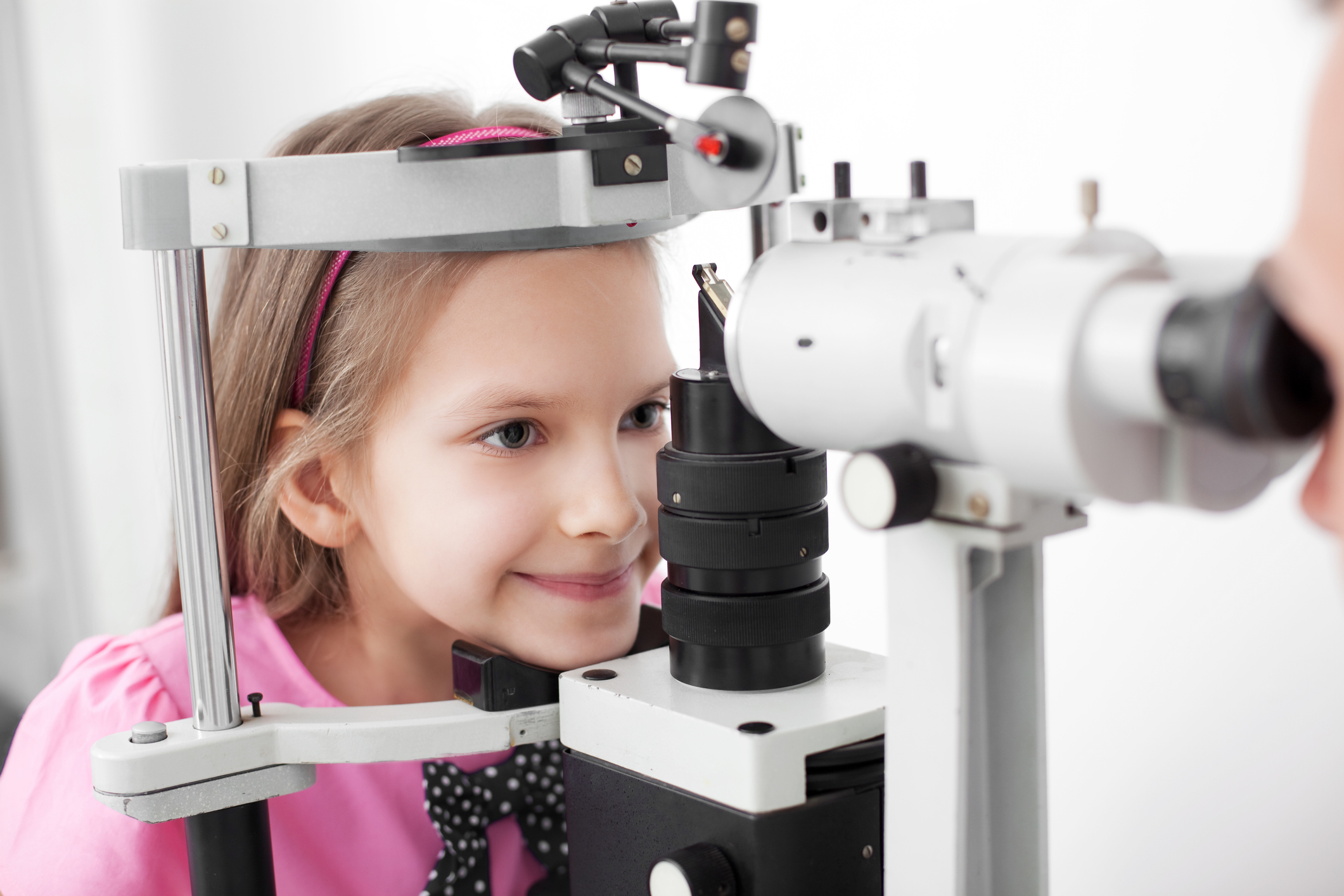
Signs Your Child May Need Glasses: What to Watch For
As parents, we strive to ensure our children are healthy, happy, and thriving in all aspects of life. While we often focus on physical health, it’s important not to overlook our children’s vision. Poor vision can significantly impact a child’s ability to learn, play, and interact with the world around them. At eyeXam, your trusted optometry practice in Newport Beach, CA, we understand the importance of early detection when it comes to vision problems in children. In this article, we’ll explore the common signs that your child may need glasses and what you can do to support their eye health.
The Importance of Early Detection
Children’s vision develops rapidly, especially in the early years. Good vision is crucial for their overall development, as it affects their ability to learn, socialize, and participate in activities. However, vision problems in children can sometimes go unnoticed because kids may not realize they see the world differently from others. They might assume that their vision is normal, even if it’s blurry or distorted.
This is why it’s essential for parents to be vigilant and recognize the signs that could indicate a vision problem. Early detection and treatment can prevent more serious issues down the line, helping your child succeed in school and enjoy a better quality of life.
Common Signs Your Child May Need Glasses
- Squinting Squinting is one of the most common signs that a child may need glasses. When a child squints, they are trying to adjust the shape of their eye to focus better. Squinting can temporarily improve vision, but it can also cause eye strain and headaches. If you notice your child squinting frequently, especially when looking at distant objects, it’s a good idea to have their eyes checked.
- Sitting Too Close to the TV or Holding Devices Close If your child habitually sits very close to the television or holds a book, tablet, or smartphone close to their face, it could be a sign of nearsightedness (myopia). Nearsighted children struggle to see objects clearly at a distance, so they compensate by bringing things closer to their eyes. While it’s common for young children to sit close to screens, persistent behavior in older kids should be addressed.
- Frequent Headaches Frequent headaches, particularly after school or other close-up activities, may be a sign of eye strain. When a child’s eyes work too hard to focus, it can lead to discomfort and headaches. If your child complains of headaches regularly, especially around the forehead or brow area, it’s important to consider an eye exam as part of the evaluation.
- Covering One Eye or Tilting the Head Some children may cover one eye or tilt their head to one side when trying to focus on something. This behavior can indicate a refractive error, such as astigmatism, or an issue with eye alignment, such as strabismus (crossed eyes). By covering one eye or tilting their head, they may be trying to reduce double vision or improve clarity.
- Difficulty in School Vision problems can significantly impact a child’s performance in school. If your child is struggling with reading, has poor handwriting, or shows a lack of interest in classroom activities, it may be due to uncorrected vision issues. Children with undiagnosed vision problems may avoid tasks that require close-up work, such as reading or writing, because it’s difficult for them to see clearly.
- Rubbing Eyes Frequently While occasional eye rubbing is normal, frequent or excessive eye rubbing could be a sign of eye fatigue or discomfort. Children may rub their eyes when they feel tired, but if it becomes a persistent habit, it’s worth investigating further. Chronic eye rubbing can also indicate dry eyes, allergies, or a need for vision correction.
- Excessive Tearing Excessive tearing, or watery eyes, can sometimes be a sign of a vision problem. While tearing can be caused by irritants, allergies, or blocked tear ducts, it can also occur when a child is straining to see clearly. If your child’s eyes water frequently without an apparent cause, an eye exam may help determine if vision issues are contributing to the problem.
- Avoiding Reading or Other Close-Up Activities If your child avoids reading, drawing, or doing homework, it could be due to difficulty seeing up close. Children with farsightedness (hyperopia) may find it challenging to focus on nearby objects, leading them to avoid tasks that require sustained close-up vision. If your child consistently shows reluctance to engage in these activities, it’s worth considering an eye exam.
- Difficulty Tracking Objects or Reading Some children with vision problems may have difficulty tracking moving objects or following lines of text when reading. This can cause them to lose their place frequently or skip lines. If your child struggles with reading fluently or tracking objects, it could be a sign of a vision issue that needs to be addressed.
- Complaints of Blurred or Double Vision While younger children may not always have the vocabulary to describe vision problems, older children might complain of blurred or double vision. Blurred vision can result from various refractive errors, while double vision can indicate problems with eye alignment. If your child mentions difficulty seeing clearly or describes seeing double, it’s essential to schedule an eye exam as soon as possible.
What to Do If You Suspect Your Child Needs Glasses
If you notice any of the signs mentioned above, it’s important to take action. Here’s what you can do:
- Schedule an Eye Exam: The first step is to schedule a comprehensive eye exam with a pediatric optometrist. At eyeXam, we specialize in children’s eye care and use child-friendly techniques to assess vision accurately. During the exam, the optometrist will evaluate your child’s visual acuity, eye alignment, and overall eye health.
- Follow the Optometrist’s Recommendations: If the optometrist determines that your child needs glasses, they will provide a prescription and help you choose the right frames. It’s important to follow their recommendations for wearing the glasses, whether it’s full-time or just for certain activities.
- Encourage Your Child to Wear Their Glasses: Some children may resist wearing glasses at first, but it’s essential for improving their vision and quality of life. Encourage your child by choosing frames they like, explaining the benefits of wearing glasses, and being patient as they adjust.
- Regular Follow-Up Exams: Children’s eyes can change rapidly, so it’s important to schedule regular follow-up exams to ensure their prescription is up to date. At eyeXam, we recommend annual eye exams for children, or more frequently if advised by the optometrist.
Children Eye Exams in Newport Beach, CA
Your child’s vision plays a crucial role in their overall development and success in life. By being aware of the signs that may indicate a need for glasses, you can take proactive steps to ensure your child sees the world clearly. At eyeXam in Newport Beach, CA we are dedicated to providing comprehensive eye care for children and helping them achieve optimal vision. If you have concerns about your child’s vision or need to schedule an eye exam, contact us today.
Read More
Understanding and Managing Astigmatism
Astigmatism is a common vision condition that affects millions of people worldwide. Despite its prevalence, there’s still a lot of confusion surrounding what astigmatism is, how it affects vision, and what can be done to manage it. At eyeXam, your trusted optometry practice in Newport Beach, CA, we believe that understanding astigmatism is the first step toward effective management. In this article, we’ll explore the causes, symptoms, and treatment options for astigmatism to help you achieve clearer vision and maintain your eye health.
What is Astigmatism?
Astigmatism is a refractive error caused by an irregular curvature of the cornea or lens of the eye. In a perfectly shaped eye, the cornea and lens have a smooth, even curvature, like a basketball. This allows light to be focused precisely on the retina, producing clear images. However, in an eye with astigmatism, the cornea or lens is shaped more like a football, causing light to be focused unevenly. This irregularity results in blurred or distorted vision at all distances.
Astigmatism can occur on its own or in conjunction with other refractive errors such as nearsightedness (myopia) or farsightedness (hyperopia). It can affect both children and adults and may be present from birth or develop later in life.
Causes of Astigmatism
The exact cause of astigmatism is not always clear, but it is believed to be largely hereditary. If one or both parents have astigmatism, there is a higher likelihood that their children will develop the condition. Other factors that may contribute to the development of astigmatism include:
- Eye Injuries: Trauma to the eye can cause scarring on the cornea, leading to an irregular shape and astigmatism.
- Eye Surgery: Certain eye surgeries, such as cataract removal, can alter the shape of the cornea and result in astigmatism.
- Keratoconus: This progressive eye disease causes the cornea to thin and bulge into a cone shape, leading to severe astigmatism.
It’s important to note that astigmatism is not caused or worsened by reading in low light, sitting too close to the television, or using digital devices.
Symptoms of Astigmatism
The symptoms of astigmatism can vary depending on the severity of the condition. Common signs and symptoms include:
- Blurred or Distorted Vision: Objects may appear blurry or stretched out, especially at the edges.
- Eye Strain: Prolonged activities that require focusing, such as reading or using a computer, may cause discomfort or eye strain.
- Headaches: Persistent headaches, particularly after close-up work, can be a symptom of uncorrected astigmatism.
- Difficulty Seeing at Night: Many people with astigmatism find it harder to see clearly in low-light conditions, such as when driving at night.
- Squinting: Squinting may help temporarily improve vision by slightly changing the shape of the eye, but it can also be a sign of astigmatism.
If you experience any of these symptoms, it’s essential to schedule an eye exam at eyeXam. Our experienced optometrists can diagnose astigmatism and recommend appropriate treatment options.
Diagnosing Astigmatism
Diagnosing astigmatism involves a comprehensive eye examination, which may include the following tests:
- Visual Acuity Test: This test measures how well you can see letters on a chart from a distance, helping to determine the extent of your vision problem.
- Keratometry: This test measures the curvature of the cornea by focusing light on it and analyzing the reflection. It helps in determining the amount and axis of astigmatism.
- Refraction Test: This test involves looking through a series of lenses to find the prescription that provides the sharpest vision. It helps in identifying the degree of astigmatism and other refractive errors.
At eyeXam, we use the latest technology and techniques to accurately diagnose astigmatism and assess the overall health of your eyes.
Treatment Options for Astigmatism
The good news is that astigmatism can be effectively managed with the right treatment. The goal of treatment is to correct the way light enters the eye, ensuring that it focuses correctly on the retina. Here are the most common treatment options:
- Prescription Eyeglasses: Eyeglasses with special cylindrical lenses are the most common and simplest way to correct astigmatism. These lenses help compensate for the irregular curvature of the cornea or lens, providing clear vision at all distances.
- Contact Lenses: Contact lenses can also be used to correct astigmatism. Toric lenses are specially designed to correct astigmatism by maintaining a specific orientation on the eye. For those who prefer contact lenses over glasses, toric lenses offer a convenient and effective solution.
- Orthokeratology (Ortho-K): Ortho-K involves wearing specially designed rigid gas-permeable contact lenses overnight to temporarily reshape the cornea. This non-surgical option can correct mild to moderate astigmatism, allowing for clear vision during the day without the need for glasses or contact lenses.
- Laser Eye Surgery: For those seeking a more permanent solution, laser eye surgery, such as LASIK or PRK, can correct astigmatism by reshaping the cornea. Laser surgery is a safe and effective option for many people with astigmatism, though it’s essential to undergo a thorough evaluation to determine if you’re a good candidate for the procedure.
- Refractive Lens Exchange (RLE): In cases where laser surgery is not an option, RLE may be considered. This procedure involves replacing the eye’s natural lens with an artificial intraocular lens (IOL) that corrects astigmatism and other refractive errors.
Managing Astigmatism
Living with astigmatism doesn’t have to be difficult. With proper diagnosis, treatment, and regular eye care, you can enjoy clear vision and a high quality of life. Here are some tips for managing astigmatism:
- Regular Eye Exams: Regular eye exams are crucial for monitoring astigmatism and ensuring your prescription remains up to date. At eyeXam, we recommend annual eye exams for most patients, but your optometrist may suggest more frequent visits if needed.
- Follow Your Treatment Plan: Whether you wear glasses, contact lenses, or have undergone surgery, it’s important to follow your treatment plan as prescribed. This includes wearing your corrective lenses as directed and attending follow-up appointments.
- Protect Your Eyes: Protecting your eyes from injury and harmful UV rays is essential for everyone, especially those with astigmatism. Wear protective eyewear during activities that could pose a risk to your eyes and always wear sunglasses that block 100% of UVA and UVB rays.
Astigmatism in Newport Beach, CA
Astigmatism is a common and manageable vision condition. By understanding the causes, symptoms, and treatment options, you can take control of your eye health and achieve clearer vision. At eyeXam in Newport Beach, our dedicated team is here to provide personalized care and help you find the best solution for your astigmatism. If you suspect you have astigmatism or need to update your prescription, schedule an appointment with us today.
Read More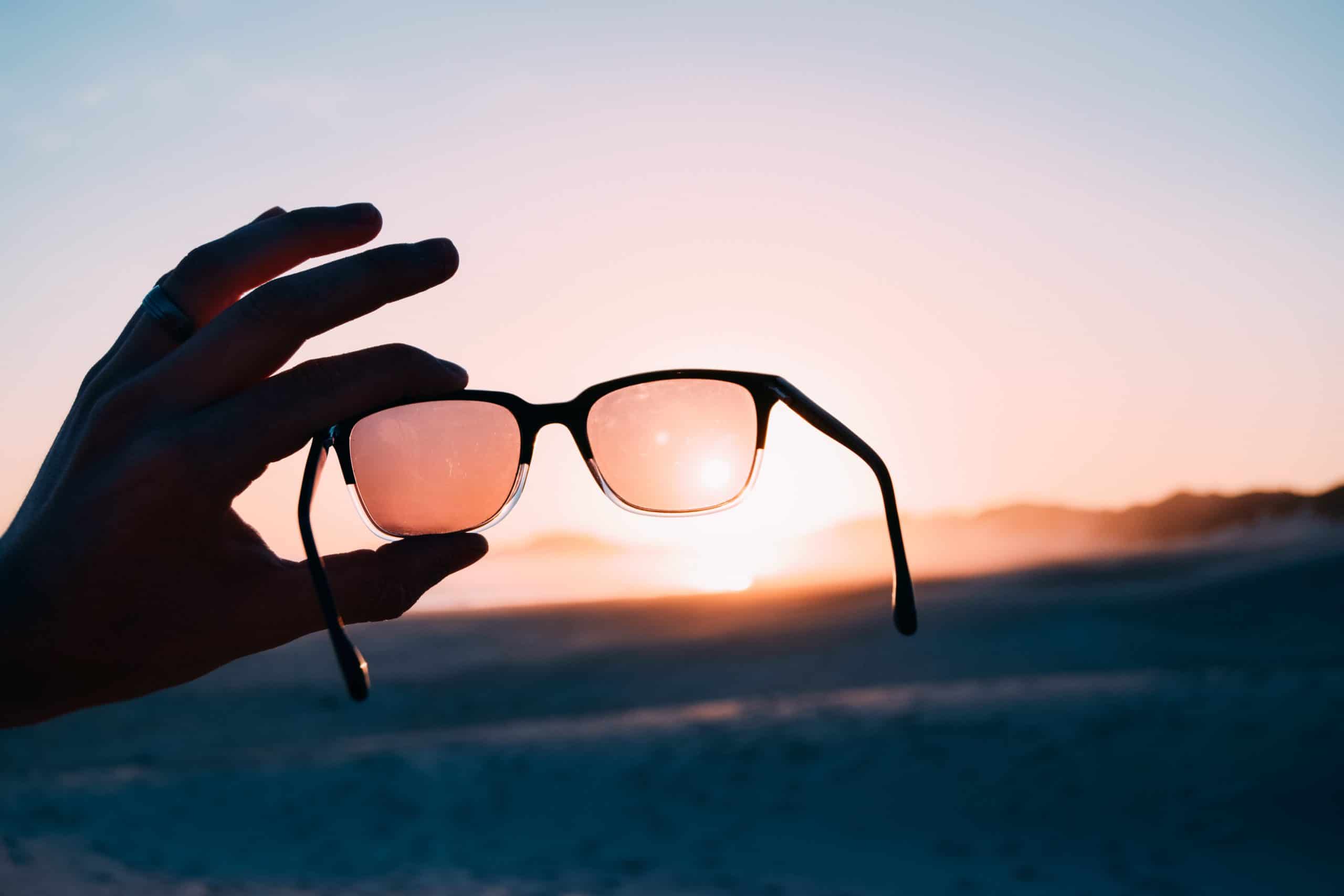
10 Tips for Protecting Your Eyes This Summer
As summer rolls around, many of us eagerly look forward to sunny days at the beach, outdoor sports, and barbecues with friends. However, while you’re soaking up the sun, it’s crucial to remember that your eyes need protection too. At eyeXam, your trusted optometry practice in Newport Beach, CA, we care about your eye health and want to ensure you enjoy the summer sun safely. Below are ten essential tips to protect your eyes this summer.
1. Wear UV-Protective Sunglasses
The most important tip for summer eye protection is to invest in a good pair of sunglasses that block 100% of UVA and UVB rays. Prolonged exposure to UV rays can lead to serious eye conditions such as cataracts, macular degeneration, and even skin cancer around the eyes. When choosing sunglasses, opt for wraparound styles or larger frames to provide additional coverage. Don’t forget, even on cloudy days, UV rays can penetrate the clouds, making sunglasses a must-have accessory all summer long.
2. Avoid Direct Sunlight During Peak Hours
The sun’s rays are strongest between 10 a.m. and 4 p.m., which increases the risk of UV exposure to your eyes and skin. Whenever possible, try to stay in the shade during these hours. If you need to be outdoors, ensure you’re wearing protective eyewear and a wide-brimmed hat to further shield your eyes from harmful rays.
3. Use a Broad-Brimmed Hat
A wide-brimmed hat can reduce the amount of UV rays reaching your eyes by up to 50%. This additional layer of protection is particularly useful when you’re spending extended periods outdoors. Pairing a hat with UV-protective sunglasses is one of the best combinations to keep your eyes safe from the sun’s harmful effects.
4. Stay Hydrated
Hydration plays a significant role in maintaining healthy eyes, especially during the summer. Dehydration can lead to dry, irritated eyes and even blurry vision. Drinking plenty of water helps keep your eyes moist and can reduce the discomfort associated with dryness, particularly if you spend a lot of time in air-conditioned environments or in the sun.
5. Wear Goggles While Swimming
Chlorinated pool water, salty ocean water, and even fresh lake water can irritate your eyes. To prevent this, wear swim goggles when swimming. Goggles protect your eyes from chlorine and bacteria, reducing the risk of eye infections and irritation. If you wear contact lenses, it’s especially important to wear goggles as contacts can trap bacteria against your eyes, increasing the risk of infection.
6. Use Eye Drops for Dry Eyes
Dry eyes are a common issue during the summer, especially if you spend time in air-conditioned spaces or dry, windy environments. Using lubricating eye drops can help maintain moisture in your eyes and relieve discomfort. For contact lens wearers, it’s crucial to use eye drops that are compatible with your lenses to avoid irritation.
7. Be Mindful of Allergies
Summer can be a challenging time for those who suffer from allergies. Pollen, dust, and other allergens can cause itchy, red, and watery eyes. To minimize allergy symptoms, try to stay indoors on high-pollen days, use antihistamine eye drops, and keep your windows closed to prevent allergens from entering your home. An air purifier can also help reduce indoor allergens.
8. Protect Your Eyes During Outdoor Activities
Whether you’re playing sports, gardening, or doing any other outdoor activities, wearing the appropriate eye protection is essential. Debris, dust, and even insects can cause eye injuries. If you’re playing contact sports, consider wearing sports goggles to protect your eyes from impact injuries. For gardening or other manual tasks, safety glasses can prevent dirt and debris from getting into your eyes.
9. Avoid Rubbing Your Eyes
It can be tempting to rub your eyes when they feel itchy or irritated, but this can cause more harm than good. Rubbing your eyes can introduce bacteria and allergens, increasing the risk of infection. Instead, use a cold compress or eye drops to relieve discomfort. If you feel something is in your eye, rinse it with clean water or saline solution rather than rubbing it.
10. Schedule a Comprehensive Eye Exam
Regular eye exams are crucial, especially as the seasons change. Summer can expose your eyes to different environmental factors, and a comprehensive eye exam can help detect any issues early on. At eyeXam, our experienced optometrists can assess your eye health, update your prescription, and provide personalized advice on protecting your eyes throughout the summer.
Summer is a time for fun and relaxation, but it’s also a season when your eyes are particularly vulnerable to damage. By following these ten tips, you can enjoy all that summer has to offer while keeping your eyes safe and healthy. Remember, protecting your eyes today helps ensure a lifetime of good vision.
At eyeXam in Newport Beach, we are committed to helping you maintain optimal eye health. If you have any concerns about your vision or need a new pair of UV-protective sunglasses, don’t hesitate to contact us. Our team is here to assist you with all your eye care needs.
Read More
Pediatric Eye Care: Ensuring Healthy Vision Development in Children
As parents, one of our top priorities is ensuring the health and well-being of our children, which includes their eye health and vision development. At eyeXam, we’re dedicated to providing comprehensive pediatric eye care services and guidance to support your child’s visual health from infancy through adolescence. This blog post highlights the importance of early eye exams, identifies common vision problems in young patients, and offers practical tips for parents to support their child’s vision development.
The Importance of Early Eye Exams
The foundation of healthy vision starts with early detection and treatment of potential eye problems. Children’s eyes develop rapidly from birth, and undiagnosed vision issues can significantly impact their learning, social development, and overall quality of life. The American Optometric Association recommends that children undergo their first comprehensive eye exam at 6 months old, followed by another at age 3, and just before they start kindergarten. Regular eye exams are crucial for catching and addressing vision problems early on, ensuring proper visual development.
Key Benefits of Early Eye Exams:
- Early Detection: Identifying issues like amblyopia (lazy eye) or strabismus (crossed eyes) early can prevent permanent vision loss.
- Academic Success: Vision problems can hinder a child’s ability to learn and read. Early detection ensures that children have the visual tools they need to succeed in school.
- Social Development: Good vision is essential for children to interact with their environment and peers effectively, supporting healthy social development.
Common Vision Problems in Children
Understanding common pediatric vision problems is the first step in safeguarding your child’s visual health. Some of the most prevalent issues include:
- Refractive Errors: Myopia (nearsightedness), hyperopia (farsightedness), and astigmatism can affect a child’s ability to see clearly at different distances. Corrective lenses or contact lenses can often remedy these conditions.
- Amblyopia (Lazy Eye): This condition occurs when one eye develops better vision than the other. If untreated, it can lead to permanent vision impairment. Early intervention is key to effective treatment.
- Strabismus (Crossed Eyes): Misalignment of the eyes can lead to vision problems and depth perception issues. It’s important for it to be diagnosed and treated early to avoid long-term complications.
- Convergence Insufficiency: This condition, where the eyes have difficulty focusing on near tasks, can make reading and other close activities challenging.
Recognizing the signs of these and other vision issues is vital. Symptoms can include squinting, tilting the head to see better, frequent eye rubbing, or complaints of headaches and eye strain.
Tips for Parents to Support Vision Development
As a parent, there are several ways you can proactively support your child’s eye health and vision development:
- Prioritize Regular Eye Exams: Adhere to the recommended schedule for pediatric eye exams to ensure any vision problems are caught and treated early.
- Encourage a Balanced Diet: Nutrition plays a significant role in eye health. Ensure your child’s diet is rich in fruits, vegetables, and omega-3 fatty acids, which are essential for developing vision.
- Limit Screen Time: Excessive exposure to screens can lead to digital eye strain, even in children. Encourage regular breaks using the 20-20-20 rule (every 20 minutes, look at something 20 feet away for at least 20 seconds) and promote activities that don’t involve screens.
- Promote Outdoor Activities: Spending time outdoors has been linked to a reduced risk of myopia. Encourage your child to play outside for at least 1-2 hours a day.
- Educate on Eye Safety: Teach your child about the importance of wearing protective eyewear during sports and activities that could potentially harm their eyes.
Why Choose eyeXam for Your Child’s Eye Care?
At eyeXam, we’re committed to providing a child-friendly environment that makes eye exams a positive experience for both children and parents. Our pediatric eye care specialists are experts in diagnosing and treating a wide range of vision problems in children, using the latest technology and a gentle, reassuring approach.
Choosing eyeXam means you’re not just getting an optometry service; you’re gaining a partner in your child’s visual health journey. We believe in educating families about eye health and providing personalized care plans that support your child’s vision development and overall well-being.
Read More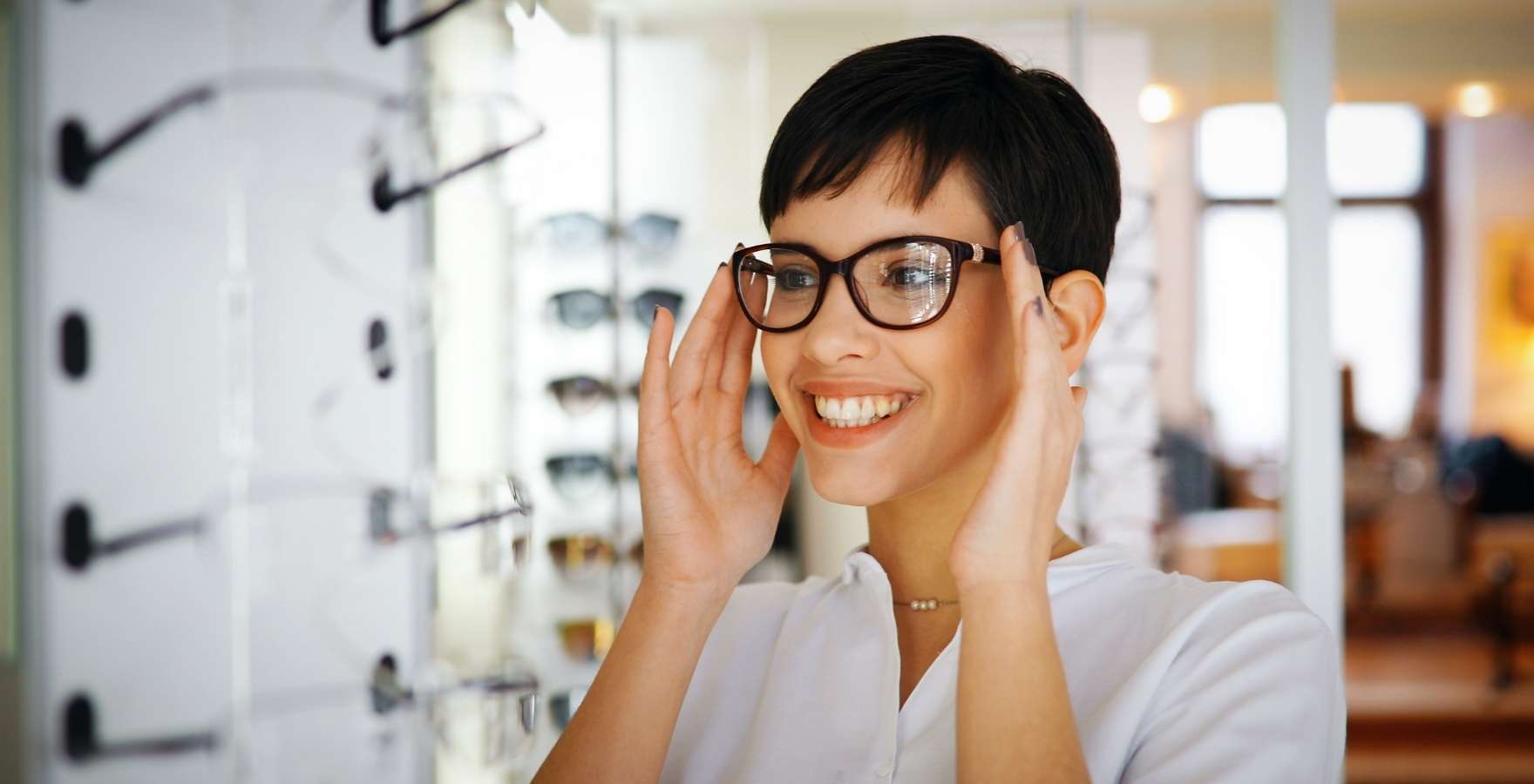
How to Choose the Right Frames for Your Face Shape
Selecting the perfect eyeglass frames is more than just a matter of vision correction; it’s a fashion statement that reflects your personal style and complements your face shape. At eyeXam, we understand the importance of finding that perfect pair, which not only enhances your vision but also boosts your confidence. This guide will provide you with expert tips on choosing eyeglass frames that align with your face shape, color preferences, size, and style, ensuring you make an informed decision that you’ll be happy with every time you catch your reflection in the mirror.
Understanding Your Face Shape
The first step in finding your ideal frames is to determine your face shape. Generally, there are four main categories: oval, round, square, and heart-shaped. Here’s how to identify yours and the types of frames that complement each shape.
Oval Face Shape
Oval faces are characterized by balanced proportions, with a slightly wider forehead and a gently narrowing jaw. Ideal Frames: Almost any frame suits oval faces, but rectangular or square frames can add contrast, enhancing your natural features.
Round Face Shape
Round faces feature soft curves with similar width and length, lacking sharp angles. Ideal Frames: To elongate and add definition to your face, opt for angular and rectangular frames. These create a longer, thinner appearance.
Square Face Shape
With a strong jawline and broad forehead, square faces benefit from frames that soften these angles. Ideal Frames: Round or oval frames help balance and add a softer edge to your features.
Heart-Shaped Face
Heart-shaped faces have a wider forehead and a narrower chin. Ideal Frames: Frames that are wider at the bottom or light-colored and rimless designs can complement this shape by balancing the width of the forehead.
Selecting the Right Color
Your skin tone, hair color, and eye color can influence which frame colors will look best on you. Warm skin tones shine with gold, honey, or warm tortoise shades, while cool skin tones are complemented by silver, black, dark tortoise, or blue frames. Don’t shy away from vibrant colors; they can accentuate your features and personal style.
Size Matters
The size of your frames should be in scale with your face size. Oversized frames can overwhelm small faces, while too-small frames may not provide adequate vision correction and can appear disproportionate on larger faces. A key tip is to ensure your eyes are centered within the frame for both aesthetic appeal and optimal vision correction.
Style That Speaks to You
Your eyeglasses are an extension of your personality. Whether you prefer a classic look with timeless designs or want to make a statement with bold, contemporary styles, the choice is yours. Consider how your eyeglasses will integrate with your wardrobe and lifestyle. For instance, if you lead an active lifestyle, you might prioritize durable and flexible materials.
Why Choose eyeXam for Your Eyewear Needs?
At eyeXam, we pride ourselves on a personalized approach to selecting eyewear. Our experts are here to guide you through the process, offering professional advice tailored to your face shape, style preferences, and vision needs. With a wide range of high-quality frames and the latest in lens technology, we ensure that your new glasses not only look great but also enhance your vision and quality of life.
Choosing the right eyeglass frames doesn’t have to be a daunting task. By considering your face shape, color preferences, size, and personal style, you can find a pair that you’ll love to wear every day. Visit us at eyeXam, where our team is ready to help you find the perfect frames to complement your face shape and express your unique style.
Embrace the opportunity to enhance your visual clarity and personal aesthetics with the perfect pair of frames from eyeXam. Remember, the right eyeglasses can boost your confidence, complement your features, and express your individuality. Start your journey to finding your perfect frames today.
Read More